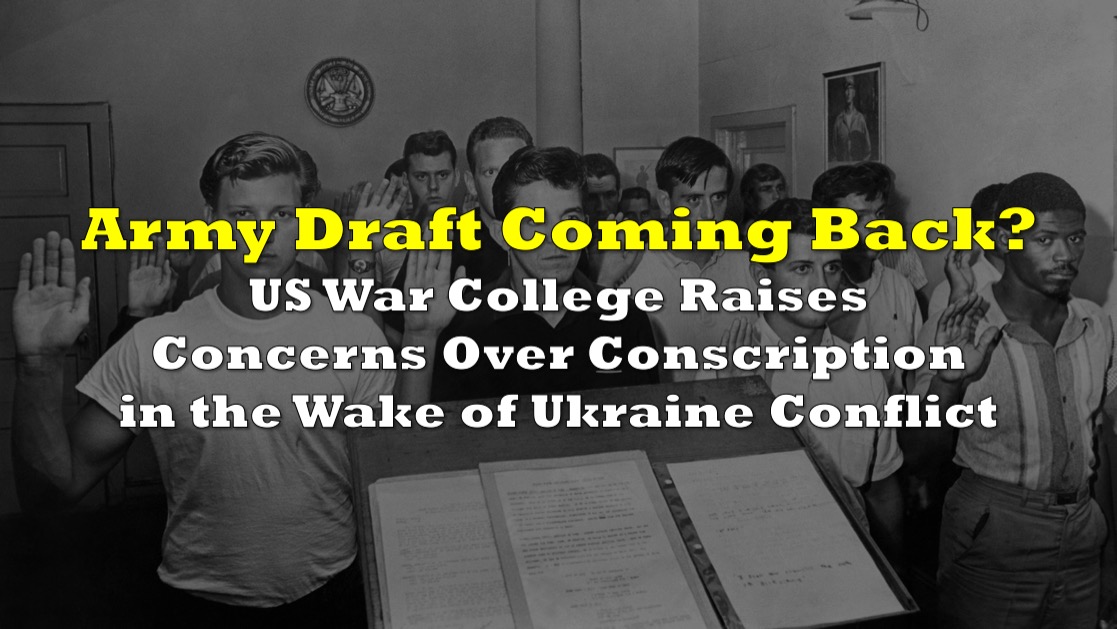In a recent publication from the US Army War College’s academic journal, a thought-provoking essay has emerged, shedding light on the lessons the US military should draw from the ongoing war in Ukraine. Of particular significance to the average American citizen is a section titled “Casualties, Replacements, and Reconstitutions,” which bluntly states that “Large-scale combat operations troop requirements may well require a reconceptualization of the 1970s and 1980s volunteer force and a move toward partial conscription.”
The rationale behind this potential reinstatement of conscription stems from alarming estimates suggesting that, in the event of the US entering a large-scale conflict, the nation could face an astonishing daily tally of 3,600 casualties and necessitate 800 replacements. To put this in perspective, the report highlights that during the course of two decades in Iraq and Afghanistan, the US incurred 50,000 casualties—a number that could be reached within just two weeks of intense large-scale combat.
This concern comes at a time when the military is already grappling with a substantial recruiting shortfall. In the previous year, the army fell short of its recruitment goal by 15,000 soldiers, with projections indicating a potential additional deficit of 20,000 this year. Adding to this dilemma, the report underscores the dwindling size of the Individual Ready Reserve, comprising former service personnel who are not actively engaged in training but could be called back to active service when needed. Their numbers have plummeted from 700,000 in 1973 to a mere 76,000 at present.
Prior to the Ukraine conflict, military strategists were fixated on the concept of “hybrid warfare,” which envisioned modern warfare scenarios dominated by proxies and special operations, rendering large-scale state-on-state conflicts obsolete. However, this perception has shifted dramatically in light of the resurgence of industrial wars of attrition.
Realist scholar Patrick Porter, in an essay published in the Journal of Security Studies, has meticulously documented this shift and the inadequacy of the hybrid warfare theory in light of the resurgence of industrial wars of attrition.
As military planners abandon the notion of modern warfare consisting solely of aerial strikes and counterinsurgency operations, they are forced to confront the reality that such conflicts demand vast manpower resources. Consequently, the idea of conscription is gaining traction as the only viable means to meet these requirements. Notably, Ukraine has resorted to conscription but at the cost of exceedingly high attrition rates, reaching 80 to 90 percent, according to Ukraine’s own admissions.
However, the prospect of reinstating conscription is disconcerting, particularly given America’s history of becoming embroiled in protracted and often inconclusive wars that consume resources, endanger soldiers, and empower adversaries.
This raises important questions regarding the potential adversaries necessitating such massive troop commitments. While a conflict with China would likely focus on naval and airpower, limiting the role of the army, Russia emerges as a primary adversary that might require conscripts for attritional warfare.
Nonetheless, some argue that the US, with its geographic isolation and lack of immediate threats, is under no obligation to engage in industrial wars of attrition in Eastern Europe. Instead, involvement in such conflicts is driven by entangling alliances, like NATO, and leaders’ ideological pursuits, rather than national interests.
The United States enjoys unparalleled security, surrounded by vast oceans and relatively benign neighbors. Consequently, there is no imminent risk of a large-scale land war on American soil. The solution to the military recruitment challenge may lie in reevaluating the need for a standing army and avoiding costly and futile overseas conflicts that drain resources and inflict suffering on American service members.
Information for this story was found via The Mises Institute and the sources mentioned. The author has no securities or affiliations related to the organizations discussed. Not a recommendation to buy or sell. Always do additional research and consult a professional before purchasing a security. The author holds no licenses.




